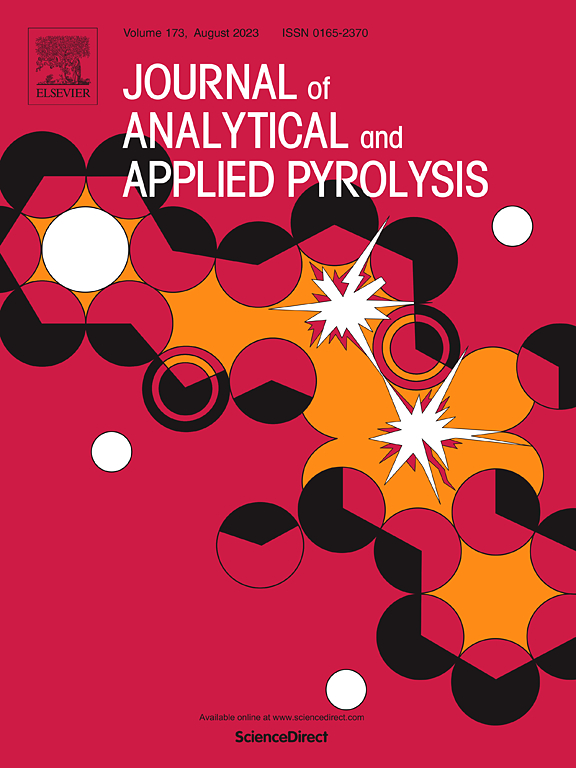Aromatic-enriched bio-oil from lignin pyrolysis catalyzed by HZSM-5: Insights into product selectivity and in-situ deoxygenation mechanism
IF 5.8
2区 化学
Q1 CHEMISTRY, ANALYTICAL
引用次数: 0
Abstract
The selectivity and catalytic mechanism of HZSM-5 in the pyrolysis of lignin model compounds at 600 °C were investigated using Py-GC/MS and density functional theory (DFT). The findings indicate that HZSM-5 elevated the relative content of aromatic hydrocarbons in the pyrolysis products of phenol, vanillin, and syringol by 12.3 %, 11.7 %, and 7.5 %, respectively. Meanwhile, the relative content of oxygen-containing products, including aldehydes and acids, was reduced by 15.7–52.0 %. Throughout the pyrolysis of lignin model compounds, various side chain reactions take place, such as dissociation, decarbonylation, isomerization rearrangement, alkylation, and aromatization. The selective catalytic decomposition mechanism of HZSM-5 on oxygen-containing functional groups involves both the physical selection imparted by the pore size structure and the selection of acid sites that form hydrogen bonds with hydroxyl, carbonyl, and methoxy groups. This mechanism was corroborated by DFT calculations, which showed that the energy barriers for the removal of most oxygen-containing functional groups were lowered by 1.7–72.4 kJ/mol. These results provide an in-depth understanding of the catalytic pyrolysis of lignin and pave the way for future research on the high-value utilization of waste lignin.
HZSM-5 催化木质素热解产生的芳香族富集生物油:对产品选择性和原位脱氧机理的见解
利用 Py-GC/MS 和密度泛函理论 (DFT) 研究了 HZSM-5 在 600 °C 高温分解木质素模型化合物时的选择性和催化机理。研究结果表明,HZSM-5 能使苯酚、香兰素和丁香酚热解产物中芳香烃的相对含量分别提高 12.3%、11.7% 和 7.5%。同时,含氧产物(包括醛和酸)的相对含量降低了 15.7-52.0%。在木质素模型化合物的整个热解过程中,会发生各种侧链反应,如解离、脱羰基、异构化重排、烷基化和芳香化。HZSM-5 对含氧官能团的选择性催化分解机理既包括孔径结构带来的物理选择,也包括与羟基、羰基和甲氧基形成氢键的酸性位点的选择。DFT 计算证实了这一机制,该计算表明,去除大多数含氧官能团的能垒降低了 1.7-72.4 kJ/mol。这些结果为深入理解木质素的催化热解提供了依据,并为今后研究废弃木质素的高价值利用铺平了道路。
本文章由计算机程序翻译,如有差异,请以英文原文为准。
求助全文
约1分钟内获得全文
求助全文
来源期刊
CiteScore
9.10
自引率
11.70%
发文量
340
审稿时长
44 days
期刊介绍:
The Journal of Analytical and Applied Pyrolysis (JAAP) is devoted to the publication of papers dealing with innovative applications of pyrolysis processes, the characterization of products related to pyrolysis reactions, and investigations of reaction mechanism. To be considered by JAAP, a manuscript should present significant progress in these topics. The novelty must be satisfactorily argued in the cover letter. A manuscript with a cover letter to the editor not addressing the novelty is likely to be rejected without review.

 求助内容:
求助内容: 应助结果提醒方式:
应助结果提醒方式:


